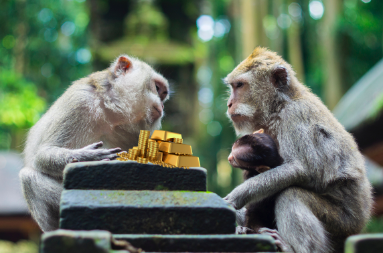What is an orangutan worth at the time of "Murders in the Rue Morgue"?
Back to "Double Investigation in the Rue Morgue"

Orangutans did not appear in Europe until the turn of the 19th century.
Prior to that time, what was known by that name was either a folkloric anthropomorphic creature (the man of the woods) or the chimpanzee with which it had been confused (the observation of two individuals of different ages and therefore different sizes and development had led to two distinct species).
The first description of an orangutan dates back to 1780 (by the naturalist Frederik von Wurmb). The specimen studied was not captured alive: the recalcitrant animal was killed by a Dutch merchant in the forests of Landak.
It is known that only two orangutans were introduced alive into France, in Paris:
- in 1808: an orangutan was offered to Empress Josephine. It was this individual that Frédéric Cuvier was able to observe and about whom he published in 1810 a Description of an orangutan and observations on its intellectual faculties. The individual survived only a few months.
- in May 1836: first living specimen to enter the Menagerie of the Jardin des Plantes, nicknamed Jack. Bought by the Museum 3500 francs (a substantial sum). Sick, he dies in the first days of the year 1837. He is the object of all fascinations; the public rushes to see him. George Sand visits him. Liszt had even planned to give him a private concert. The reader is referred to the translation of an article by science historian Richard W. Burkhardt, from which this information is borrowed.
All of these elements at least indicate that the chances of (a) capturing a live orangutan, (b) repatriating it incognito and extract it from the institutional circuit, and (c) keeping it in good health in the climates of Europe are, individually and collectively, quite thin. The fact that the Maltese sailor's beast remained for a few days in perfect freedom without having been spotted seems moreover not very credible.